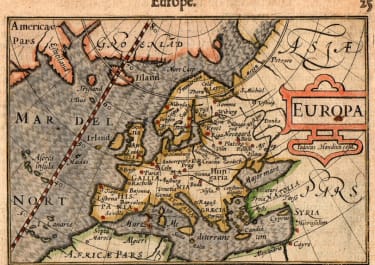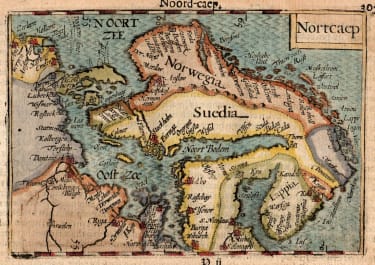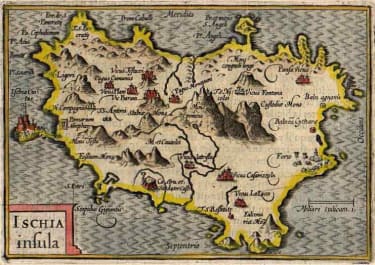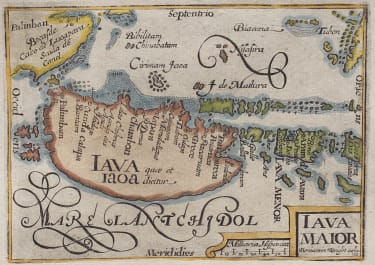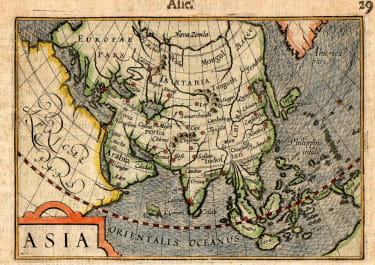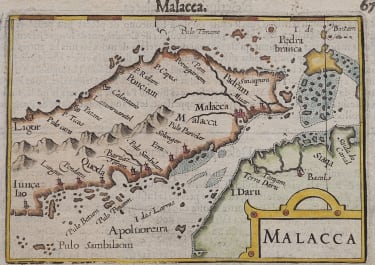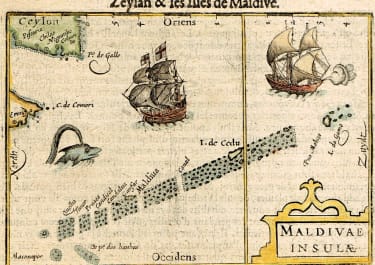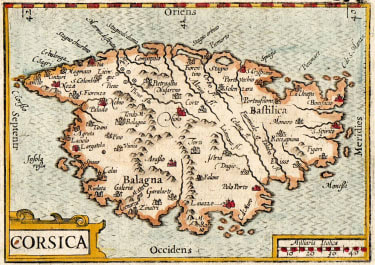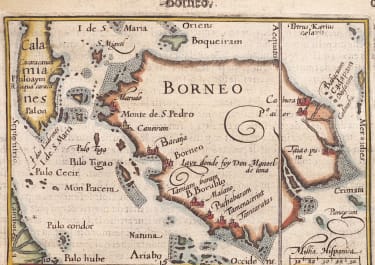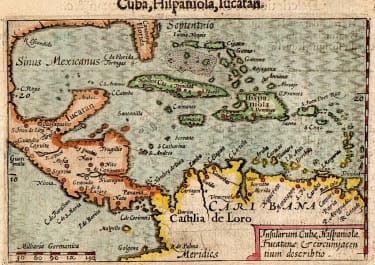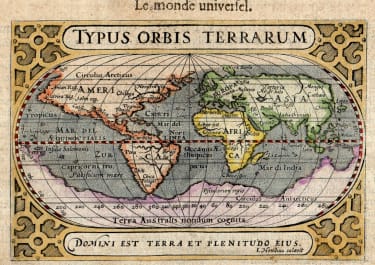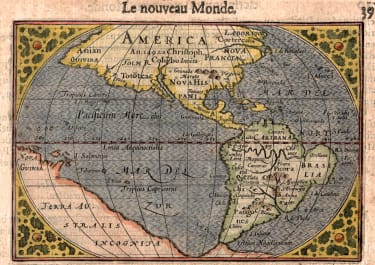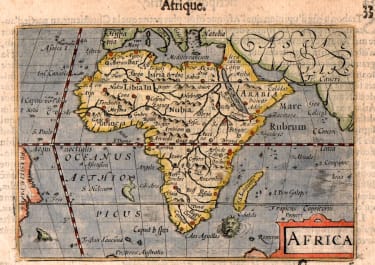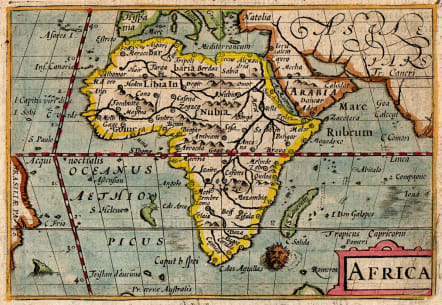
AFRICA
Sold
Attractive & rare map of Africa ..interesting for its strange depiction of the Nile, which originates in a large lake south of the Equator. From this lake three large rivers flow to the seas: the Nile to the Mediterranean, the Congo to the Atlantic and what could be the Zambeze to the Indian Ocean. This map is based on the Gastaldi-Ortelius and Mercator models, although it includes the unique feature of a lake along the Equator into which both the two Ptolemaic lakes flow. The sea is engraved in a moiré pattern, and the map is further decorated with a strapwork title cartouche and three sea monsters, including a sea ""lion."" Though not signed, this map was likely engraved by either Jodocus Hondius or Petrus Kaerius, who engraved the majority of the maps of the Caert-thresoor (Map Treasury). This is the scarce first state without degrees of latitude in the borders, published by Cornelius Claesz and printed by Langenes.
This map comes from the first french edition of Langene's Caert Thresor ..here the Atlas is titled 'Thresor de Chartes, contenant les Tableaux de Tous les Pays du Monde'. French text.
V Good hand colour
Very good condition.
code : M4661
Cartographer : LANGENES Barent
Date : 1598/1600 The Hague
Size : 8.5*12.5 cms
availability : Sold
Price : Sold
Barent Langenes
Langenes was a publisher in Middelburg about whom little is known except that he produced the first edition of a very well known miniature atlas, the 'Caert-Thresoor'.
The atlas was published by Cornelis Claesz in Amsterdam, the foremost publisher of the day. The copperplates were engraved by brothers-in-law Jodocus Hondius and Petrus Kaerius, the most skilled engravers of the day.
The Caert-Thresoor
The Caert-Thresoor, a small atlas of the world in oblong format, appeared in 1598; thereby, its publishers wrote a new page in the history of atlas cartography. The preparations for this prototype of the new generation of Dutch pocket atlases began around 1595. At that time, Cornelis Claesz commissioned the skilled engravers Jodocus Hondius and Pieter van den Keere to engrave the maps. An unnamed young writer and poet - in Burger's opinion, it was Cornelis Taemsz of Hoorn - was called upon to write the accompanying text. Claesz wanted his Caert-Thresoor to outshine the similar small world atlases that had been produced thus far in Antwerp. In this way, he set out to spark interest in and knowledge of geography among the public at large in the Northern Netherlands. In view of the various reprints, editions, and adaptations of this work in Dutch, French, and Latin, obviously the Amsterdam publisher was quite successful in that endeavor.


